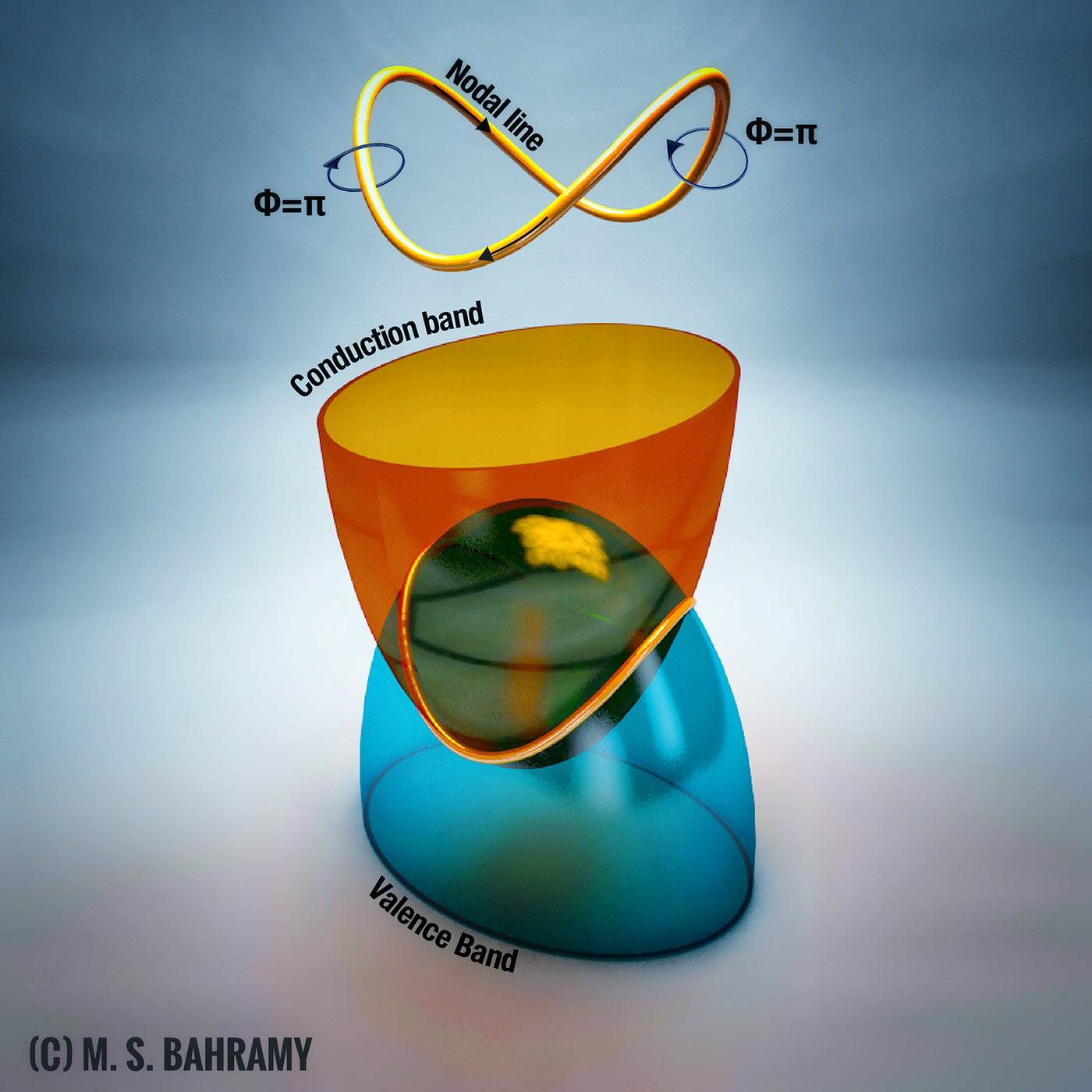Magnetic generation and switching of
Topological Qaunatum Phases in a Trivial Semimetal
Electrons in metals usually behave as free particles independent of each other and are prone to scattering by impurities such as structural defects. In a group of materials known as topological Weyl semimetals, electrons can collectively generate a purely quantum state, enabling them to act as massless monopoles with a net magnetic flux at certain points of energy-momentum space. In another group, called nodal-line semimetals, this behavior can be further stabilized along a closed path in the energy-momentum space. Controlling such nontrivial quantum orders has been a tireless quest, as it allows accessing exotic phases of matter, not realizable in real space. This, however, has proven to be challenging. Here, we present the first successful attempt at creating both Weyl and nodal-line semimetallic phases by an external magnetic field in an otherwise topologically trivial material. By changing the direction of the magnetic field, we can switch between these two phases. The characteristic feature of this system is a subtle interaction between the conduction electrons with spatially isolated magnetic moments centered on europium, a heavy-metal element with the highest possible atomic magnetic moment in the periodic table. An external field can easily align these local magnetic centers. They can, in turn, dictate the desired topological order among the conduction electrons, manifested as robust electronic states that can be observed as distinct anomalies in transport measurements. Our findings pave the way for developing a new generation of electronic devices with unprecedented quantum functionalities.

Schematic illustration of topological nodal-line semimetallic phase in EuP3. The anisotropic electronic dispersions of conduction and valence bands lead to the formation of a warped nodal line spanning over a wide energy range around the Fermi level.

